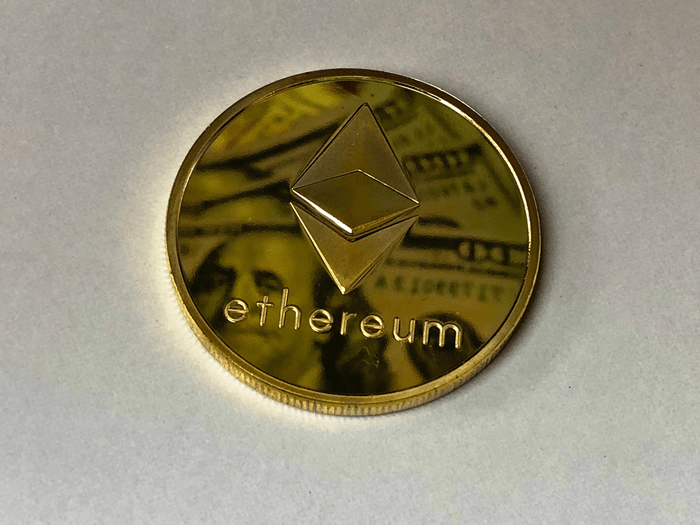The price of Ethereum has more than doubled since the beginning of the year and shows few signs of slowing. Are we witnessing a bubble or genuinely sustainable growth?

(Image via Pexels)
The crypto market has seen an investment boom this year. That’s especially true of Ethereum, which is sitting at or around $400, a significant increase from its humble beginnings of $130 at the beginning of the year.
According to the analytics firm TokenInsights, trading volume for cryptocurrency derivatives nearly doubled in the second half of 2019, and 2020 was expected to show similar trends. That projection was made before COVID-19 hit and millions of new retail accounts were registered on popular consumer platforms like eToro and Robinhood.
It owes this boom in part to the evolution of the Decentralized Finance (DeFi) sector and the wider crypto market picking up again. ETH “hodlers” will cite this as proof that the currency is set for the moon but there are still many questions surrounding its price sustainability.
Free Reports:
 Sign Up for Our Stock Market Newsletter – Get updated on News, Charts & Rankings of Public Companies when you join our Stocks Newsletter
Sign Up for Our Stock Market Newsletter – Get updated on News, Charts & Rankings of Public Companies when you join our Stocks Newsletter
 Get our Weekly Commitment of Traders Reports - See where the biggest traders (Hedge Funds and Commercial Hedgers) are positioned in the futures markets on a weekly basis.
Get our Weekly Commitment of Traders Reports - See where the biggest traders (Hedge Funds and Commercial Hedgers) are positioned in the futures markets on a weekly basis.
Ethereum’s Price Is Driven by DeFi and ETH 2.0 Hype
Setting aside the impact of Bitcoin’s price, there are two primary drivers of ETH’s price: The DeFi sector and the Ethereum 2.0 update, with the former driving hype about the latter.
DeFi is one of the most interesting advances in the crypto sector over the past few years. DeFi apps seek to replicate decentralized versions of many of the financial instruments necessary to a modern economy.
There are many kinds of DeFi apps but by far the most impactful in 2020 were decentralized lending platforms and decentralized exchanges.
Exchanges
Decentralized exchanges like UniSwap are popular because they provide an easy way to exchange tokens without being forced to go through centralized exchanges with high fees, such as Coinbase.
As important as UniSwap is, however, the real driver of growth has been lending platforms.
Lending Platforms
There is currently around $11 billion locked into lending platforms. This rapid growth has been driven by the controversial practice of rate farming.
Lending platforms need both lenders and borrowers. In order to ensure that there is liquidity on the platforms, many offer artificially inflated interest rates. This encourages lenders to lock value into the platform and has helped to fuel the rapid growth of DeFi lending.
DeFi-Strain Highlights the Importance of Ethereum 2.0
The reason that DeFi is such an important price driver for Ethereum is that the majority are built on Ethereum’s ERC20 standard. This means that they rely upon the Ethereum blockchain in order to process transactions. This is good because it increases demand for ETH and gas. But it also increases the load on the network.
During the DeFi boom, the number of transactions on the Ethereum network skyrocketed. As a result, miners made more than $168.7 million in September, a 39% increase over the previous month.
These high fees, and slower transactions, highlighted a key problem with Ethereum. Proof of Work (PoW) consensus is not scalable. Miners require high fees, and if high network usage makes transactions slow or expensive,there will be a ceiling on adoption.
Beacon Chain and Casper
The planned Ethereum 2.0 update is designed to fix this. The first and most important step is the roll-out of a new blockchain network, the beacon chain. This will build the foundation that Ethereum needs to move away from a PoW system to a Proof of Stake (PoS) blockchain called Casper.
This new system will remove the need for miners and enable users to earn rewards for securing the network by locking 32 ETH into a smart contract. An equal amount of ETH will be created on the new blockchain and kept there until the new and old systems are merged.
This means that once the switch happens it will be possible for users to monetize Ethereum without liquidating the currency. This in turn will increase demand for Ethereum as a return-generating asset.
Additionally, as miners are cut out from the system it will remove the scalability problems currently faced by Ethereum and ensure that the DeFi boom benefits the blockchain in the long term, rather than breaking it.
Ethereum Has Strong Fundamentals
The fate of Ethereum is inexorably tied to that of the DeFi sector. This means that the current price might be slightly inflated based on current fundamentals, but is justifiable based on Ethereum’s long term fundamentals.
If Ethereum is able to successfully roll out the 2.0 update then it will likely retain the bulk of new DeFi projects. In the long term, this means that Ethereum is likely set to continue growing.
By Taylor Wilman

- Indices decline amid hawkish comments from the Fed. Investors are waiting for Israel’s answer Apr 17, 2024
- EURGBP: Slams into support on hot UK inflation Apr 17, 2024
- Brent crude prices dip amid concerns over global demand Apr 17, 2024
- Stock indices sell-off amid rising geopolitical tensions in the Middle East. China’s GDP grew the most in a year Apr 16, 2024
- New FXTM commodity hits all-time high! Apr 16, 2024
- NZD hits five-month low against strong US dollar Apr 16, 2024
- Escalating conflict in the Middle East is forcing investors to shift funds to safe assets Apr 15, 2024
- US dollar exhibits remarkable strength amid global tensions Apr 15, 2024
- COT Metals Charts: Speculator bets led higher by Copper & Platinum Apr 13, 2024
- COT Bonds Charts: Speculator Bets led by 10-Year & 5-Year Bonds Apr 13, 2024
